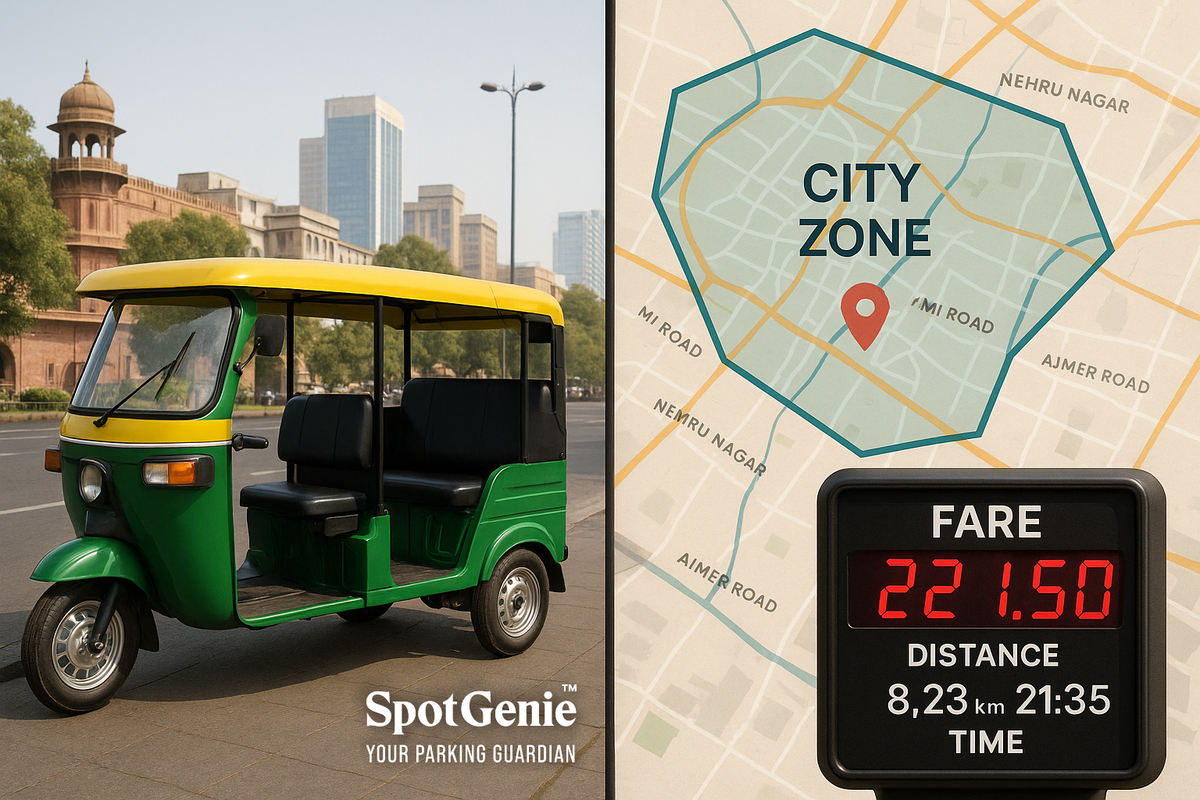Smart Regulation of E‑Rickshaws: Geofencing & Smart Fare Algorithms
Explore how Indian cities are using geofencing zones and dynamic fare algorithms to regulate e‑rickshaws fairly and transparently.

E‑Rickshaw Geofencing & Smart Fare Algorithms: Regulating India’s Last‑Mile
SpotGenie Gyaan explores how cities like Jaipur, Gurugram, and Delhi are bringing tech into e‑rickshaw regulation-making last‑mile travel transparent, fair, and safer.
How Do Geofencing & Smart Fare Systems Work?
Geofencing uses GPS to define virtual zones-e‑rickshaws are allowed to operate only within their assigned areas. Meanwhile, smart fare algorithms calculate the final fare based on distance, traffic density, time of day, and pre-determined pricing slabs.
City Rollouts You Should Know
- Jaipur: Six color-coded geofencing zones implemented in 2024 restrict e‑rickshaw operations to designated areas. Drivers must stick to zone limits, reducing unauthorized travel. Over 45,000 e‑rickshaws are expected to comply by early 2026.
- Delhi NCR & Gurugram: Pilot fare-meter systems compute fares automatically using distance + time algorithms. These compute fares based on traffic, waiting, and peak hour factors. Systems align with MoRTH’s telematics standards for auto‑fare meters with emergency buttons.
Why This Tech Matters
- Fair Pricing: Riders know exact fare-haggling gone, clarity gained.
- Better Enforcement: Authorities can verify routes and working zones via geo alerts.
- Driver Benefits: Stable earnings and no penalty for following zone/fare rules.
Challenges for Cities & Drivers
- GPS signal drops or mapping errors can misclassify a trip as outside the zone.
- Poorly integrated or fake hardware + patchy compliance by unregulated operators.
- Training costs and tech literacy gaps among drivers new to smart metering.
- Need for clear public rules-some drivers in Jaipur have raised concerns over a lack of clarity on zone boundaries ahead of licensing enforcement.
Who Benefits & What Drivers Should Do
- City Authorities: Use real-time data to rationalize zones, manage e‑rickshaw density, and refine pricing slabs.
- Drivers: Stick to marked zones, use certified meters with fare algorithms, and keep digital trip logs for transparency.
Conclusion: Smart Regulation Is Better for All
Geofencing and smart fare algorithms are not just technology-they're a step toward fair, predictable, and organized last-mile mobility. With Jaipur’s zoning and Delhi’s algorithmic meters, cities are piloting forward‑looking ways to regulate e‑rickshaws without hurting livelihoods or rider convenience.
Follow us on:
🅾 Instagram |
ⓕ Facebook |
𝕏 X |
▶️ YouTube |
🟢 WhatsApp



